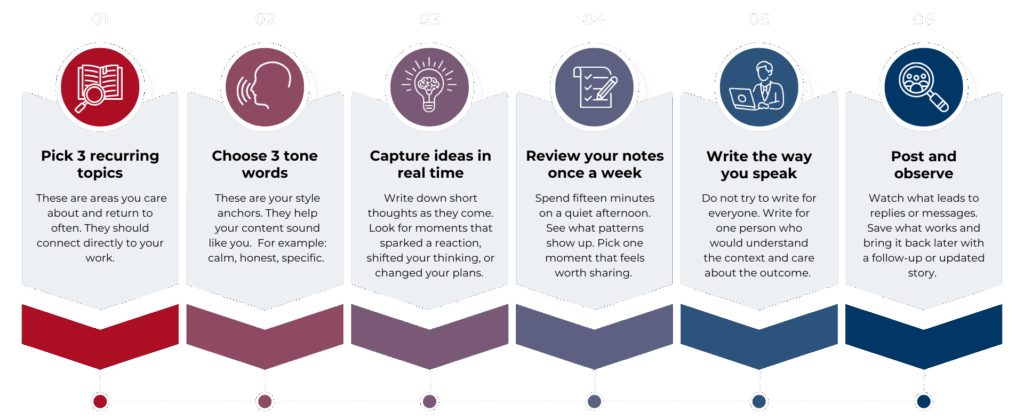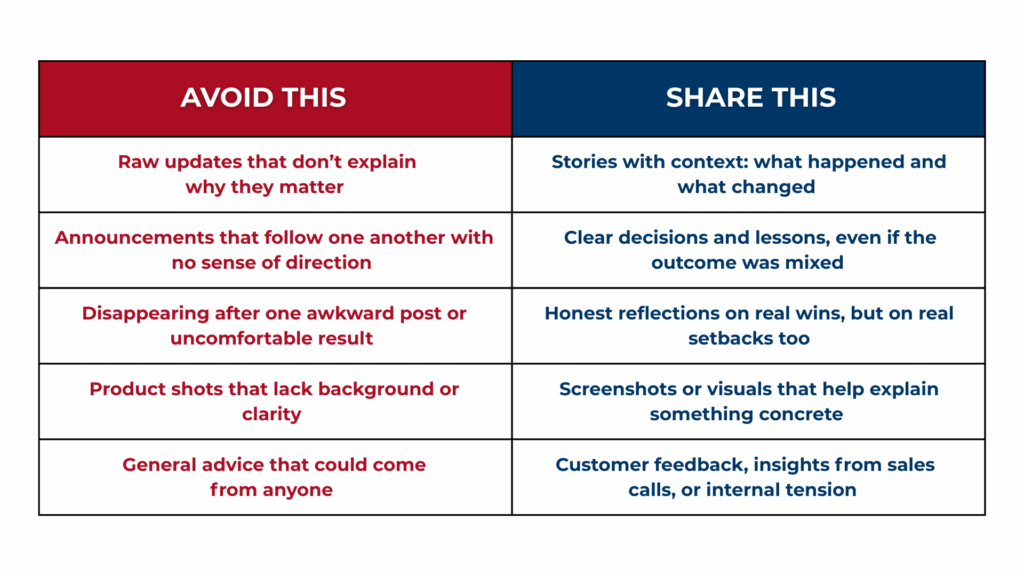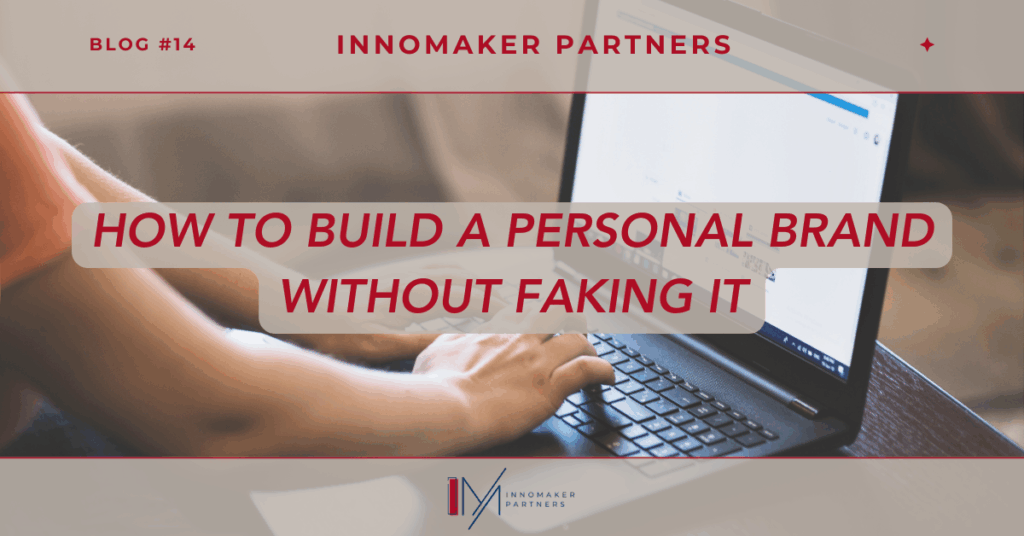Most people assume personal brand is about standing out. But for founders, operators, and independent builders, it’s more about becoming easier to trust. In the early stages of building something new, you often are the clearest signal others can rely on. In this article, we unpack how to build your personal brand with a simple rhythm that is useful, honest, and actually sustainable.
Personal branding starts with patterns
For anyone building something early-stage, personal brand is not a side project, but part of the work. Before your product is ready, before you have traction, and sometimes even before you have a team, people begin to reckon your clarity and your consistency. That impression matters more than most expect.
Personal branding is about becoming easier to trust. Whether you are speaking to a future customer, a possible hire, or someone who might one day invest, they are all looking for signs of how you think and how you move. They notice what you say, how you say it, and how often you say it.
This pattern becomes your brand. To explore branding further, read our detailed guide on building a strong brand for your startup.
Why personal branding often feels difficult?
Most people do not struggle with content because they have nothing to say. The real difficulty is getting past the tension that builds before you say it. This hesitation shows up even in experienced founders and operators.
Sometimes it is the fear of saying something that falls flat. You write a line, then delete it. You edit a post five times, then save it as a draft. You wonder if it sounds obvious, or if it sounds like too much.
Other times, it comes from trying too hard to impress. You look at how others write and try to match their style. You use language that is not yours. In the process, your voice gets lost.
And in many cases, the block is more practical. You do not have a rhythm. You are not tracking ideas, so when you sit down to write, you are starting from zero every time.
These patterns are common. And they are often amplified by the fear of being judged: a feeling that tends to grow the moment you decide to build your presence more intentionally.
Build a personal brand routine you can keep
The best way to avoid pressure is to make your posting habits feel lightweight, not urgent or strategic, but simply part of how you close your week or reflect on your progress.
Here is a simple structure that works well for founders, operators, freelancers, and solo builders alike:

This kind of rhythm is meant to support your work, not distract from it. If your content starts from what actually happened, and stays grounded in how you think, you won’t run out of things to say and the right people will begin to notice.
How to communicate your personal brand clearly
Every update becomes a small part of the story others build about your work. Over time, these signals either form a clear impression or leave people guessing. This can help you tell the difference between useful content and surface-level noise:

When your posts help people understand how you approach decisions, they tend to engage more deeply. What usually stands out is not the polish or reach, but the clarity. People who already follow your work begin to recognize patterns and that’s what builds trust over time.
How to stay present without burning out
Most people don’t stop posting because they run out of things to say. What fades first is the rhythm. Without a pace that feels realistic, even useful ideas start to feel like work. The friction builds slowly and once it does, staying visible turns into something you have to restart from scratch.
Here is what tends to work over time:
- Keep a light, steady rhythm: One or two posts a week is enough to build recognition and stay consistent.
- Use your week as a source: A quote from a customer, a moment from a sales call, or a tradeoff you made are usually more relatable than polished updates.
- Return to older posts: A strong idea often has more to say the second time around. Add new context or results, and it becomes relevant again.
This kind of visibility doesn’t need high volume, but habits that fit the pace of your real work. When you focus on patterns, not performance, staying present becomes something you can actually maintain.
Why personal branding plays a key role today
According to Forbes, 82% of people are more likely to trust a company when its senior leadership is active on social media. And 77% of buyers are more inclined to choose a brand when they feel a personal connection to its founder.
PayPal recently created a Head of CEO Content role to help shape how leadership communicates publicly. That move reflects a broader shift: companies are beginning to treat personal visibility as a strategic asset, not just a communication channel.
At the same time, OpenAI posted a senior content strategist role focused on storytelling, product education, and positioning, all signals that voice and narrative are becoming critical parts of how even technical companies grow trust.
For early-stage founders, this trend brings a quiet advantage. You don’t need a team to be clear. You only need to make it easier for others to follow what you’re building, and why it matters.
So how to start building your personal brand?
If the idea of building your personal brand still feels abstract, the best next step is to get a clearer view of where you actually stand.
We’ve put together a short Personal Brand Assessment that helps you see your current position, what’s already working, where the friction is, and what to focus on next. It takes about four minutes and gives you tailored suggestions based on how you show up today.
If you’re unsure how to move forward, this is often the easiest place to begin. Take the assessment and get your next step in a format that’s built around your actual reality, and not someone else’s playbook.



